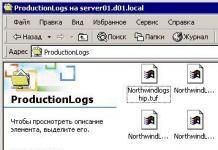Internet speed via Wi-Fi is a topic that has always been discussed, and will be discussed on various forums, in comments, etc. Very often they ask questions like: “why is the speed via Wi-Fi lower than via cable,” “ why is the speed through the router less”, “how to increase the Internet speed via Wi-Fi”, etc. Why does this even happen, where do these questions come from? I'll explain now.
There is Internet, which is connected directly to the computer. The provider promises speeds of, for example, 100 Mbit/s. When checking, the speed may be a little lower, but something like that. We buy a router, install it, and of course check the speed, because we read somewhere that the router slows down the speed. We check from the router via cable, it seems normal, the speed has not dropped much. We check when connecting via Wi-Fi and see that the speed is two or even more times lower than when connecting via cable. For example, on Wi-Fi, out of 100 Mbit/s that the provider provides, there are only 50 Mbit/s left, 40, or even less. It is clear that this does not suit us, and we are starting to look for a solution. And in search of a solution, we go to pages like this one.
If you want to see specific tips on the topic of increasing speed over Wi-Fi, then I will write about this a little later, in a separate article. But, I want to say right away that the tips that I will write about, and which can already be found on the Internet, as a rule, do not give any results in terms of increasing speed. Although, it depends on individual cases. And in this article I just want to tell you why it happens that when connected via a router, the Internet speed is lower than, for example, via cable.
Why does my Wi-Fi router slow down?
Every router slows down the speed. Some less, some more. As a rule, this depends on the price of the router itself. The more expensive it is, the more powerful it is, and the more powerful it is, the less speed will be reduced. Now I'm talking specifically about connecting via Wi-Fi. If the cable speed through the router is lower, then, as a rule, this is not critical. But over a wireless network, there are significant losses in speed.

Many are still interested in the numbers that are indicated on the box with the router, or in the specifications. There you can see speed information. For example: up to 150 Mbit/s, or 300 Mbit/s. And here the questions arise again: “why does my router support 300 Mbit/s, but my speed is 50 Mbit/s?” So, the manufacturer indicates the maximum speed , which under normal conditions would never be obtained. The speed will always be much lower. And from the 300 Mbit/s that is written on the router, we often get speeds several times lower. But how much less the speed will be depends on the power of the router (mostly), and on a number of other factors, which I will now talk about.
Also, we must not forget that in addition to the router, we also have a Wi-Fi receiver in our network, in our laptop, tablet, smartphone, or. Which also supports different standards, and the speed at which it operates may be lower than what the router can produce. Speed is always determined by the slowest device on the network. For example: the router produces a theoretical 300 Mbit/s. But the adapter that receives the signal can operate at a maximum speed of 150 Mbit/s. And we already get a limit of 150 Mbit/s, since this device is the slowest on the network. Well, I will delve further into these nuances, I just wanted to explain why the speed suffers so much when connecting via a Wi-Fi network.
What determines the speed of a Wi-Fi network, and how to get maximum speed?
As promised, I will write in more detail about ways to increase speed in a separate instruction. And now, I will list the main reasons that affect the speed of a Wi-Fi network:
- Wi-Fi router. Network standards (802.11b, 802.11g, 802.11n, 802.11ac) which it supports, what technologies it uses, and the power of the hardware itself. Typically, the more expensive the router, the higher the wireless speed.
- Router software and Wi-Fi receiver on your computer. Very often, by updating the router firmware or adapter drivers on the computer, the speed becomes faster.
- Interference. Interference can come from other neighboring Wi-Fi networks (mostly) and from household appliances.
- Wi-Fi network power. It’s not news that near the router, where the signal is maximum, the speed will be higher than in another room, where the network signal is no longer so stable.
- The number of connected devices to your network. If one device is connected to your router, then it will receive all the speed that the router can provide. If we connect another device and start downloading something on it, then the speed will be divided by 2, and so on. In addition, all connected devices create a load on the router’s hardware, which leads to a drop in speed.
- The type of internet connection your ISP uses. The fact is that if your provider uses the connection type Dynamic IP or Static IP, then the router will reduce speed less than with a PPPoE, L2TP and PPTP connection.
- Router settings. Correctly setting up network protection, choosing the network operating mode and channel width, as well as changing the channel can slightly increase the speed.
How to organize a Wi-Fi network so that the loss of speed is minimal?
Regarding the Internet provider: if you have not yet connected to the Internet, and if possible, then choose a provider that uses Dynamic IP or Static IP connection technology. This will make it easier for the router, and setting up such a connection is much easier.
Selecting a router: if you want minimal loss of speed, you will have to spend money on a router. I advise you to buy a router that can operate at the frequency 5GHz(GHz), and support . The 5GHz frequency is now practically free, which means that there will not be much interference there. After all, basically, so far all Wi-Fi networks operate at a frequency of 2.4 GHz. And the new standard 802.11ac, even in comparison with the currently most popular 802.11n, allows you to transmit information at a speed of as much as 6.77 Gbit/s. This is of course in theory, with special equipment.
Devices you will connect to the network: as I wrote above, the speed also depends on the network clients. It is advisable that your devices are new, supporting the modern 802.11ac standard, or at least 802.11n. If this is a computer, then update the driver of your Wi-Fi adapter. I wrote about this in.
Check your Internet speed, share the results in the comments, and tell us if your router slows down the speed too much. Best wishes!
Internet speed via wifi is another question that you will probably have if you have carefully read previous articles on my blog and have already installed wireless Internet at home. Surely many have already noticed that your wifi connection speed is low - often much lower than it was when connecting via cable and than indicated in the tariff plan. Also, probably at least half of those reading this article have encountered the riddle that the box of the router, access point or adapter indicates support for 100 or even 300 Megabits per second, but the actual Internet speed over WiFi and local network is much lower. Let's figure out why the router slows down the Internet speed and how to increase it!
Wi-Fi speed
The speed of a wifi connection, like the Internet in general, is measured in kilobits or megabits per second. They are designated by the following abbreviations: Kbit/s, Kb/s, Kb/s, Kbps, Mbit/s, Mb/s, Mb/s, Mbps. Do not confuse them with another speed measurement - kiloBYTES and megaBYTES per second - this is not the speed of the Internet, but the speed of data transfer by the program. Most often it is displayed in utilities such as ftp or torrent clients. They are designated very similarly, but the letter “B” (“B”) is large here: KB/s, KB/s, KB/s, KBp, MB/s, MB/s, MB/s or MBps. Their ratio is as follows:
1 byte = 8 bits
Accordingly, if the ftp client displays a data transfer speed of 5 megabytes per second, then multiply this number by 8 and get an Internet speed of 40 megabits per second.
Now let's define what we mean by the concept of “router speed”. There are actually two characteristics:
- Speed of working with the Internet, that is, from WAN port to LAN port.
- Speed of operation between two devices within the same local network, that is, WLAN-WLAN
How to measure the speed of a wifi router when using the Internet?
To measure Internet speed via wifi, it is not necessary to launch programs and perform mathematical operations. There are online services that will help you do this automatically. We will use the most popular site SpeedTest.net.

Click on the “Begin Test” button and wait for the system to test. Here's the result:

It turns out that my downstream speed is 33.56 Mbit/s, and my downstream speed is 49.49 Mbit/s. This measured the speed of the wifi connection to the Internet, and not the speed of the wifi router connection via cable. Now we disconnect from wifi, connect the PC to the router via cable and take the same measurements. If it turns out that the cable speed is higher than the speed of the wifi connection, then read the article further.
Scientific experiment - measuring the speed of a wifi connection
Theory is theory, but let's evaluate in practice how different the speed readings for receiving and sending data are for different types of connection.

As we can see, the highest speed is obtained when the cable is connected directly to the computer - 41 Mbit/s for reception.
A little less - when the Internet is via cable, but through a router - 33 Mbit/s for reception
And even less - via wifi: 26 Mbit/s
From this we can conclude that the router reduces the speed for objective reasons, which we will now look into.
Router slows down wifi speed
So, if your wifi speed is low, then the router is cutting the speed. Scientifically, this is called WAN-LAN throughput or routing speed. This parameter is responsible for the filling of the device, the parameters of which are usually indicated on a sticker on the bottom and are designated as H.W. - HardWare. If they do not correspond to your tariff plan, then you need to change the device to a more powerful one with more bandwidth.
Also, the speed of the Internet via wifi depends on the type of connection to the provider. In decreasing order they look like this: DHCP and Static IP - VPN - PPTP.
It turns out that if the device box indicates a Wi-Fi data transfer speed of up to 300 Mbit/s, and the WAN-LAN parameter for this model in combination with the type and protocol of connection to the provider is equal to 24 Mbit/s, then the speed of the Internet connection cannot exceed 24, but in reality it will most likely be less.

But the reason may not only be in the router - the hardware and software of the wifi adapter on the computer receiving the signal must also have the appropriate parameters.
You should also take into account that the technical specifications indicated in the instructions and on the stickers are designed for ideal operating conditions - with a minimum distance from the router to the device, in the absence of third-party interference, signal-absorbing materials and with minimal network load. That is, if you have a Navy communications center near your house, the router is in the next room behind a reinforced concrete wall, and at the same time your sister downloads all the episodes of “Interns” via torrent, then it is quite logical to assume that your wifi Internet speed will be much lower than indicated on the box and in the tariff plan and you will not be able to enjoy playing Counter Strike. In practice, the actual speed of a wifi connection is two to three times less than indicated in the specification.
WiFi speed via router
In nature, there are several standards for wireless data transmission technology via wifi. Below is a table that compares theoretical and practical speeds:
| Standard | Speed in theory in Mbit/s | Speed in practice in Mbit/s |
|---|---|---|
| IEEE 802.11a | Up to 54 | Up to 24 |
| IEEE 802.11g | Up to 54 | Up to 24 |
| IEEE 802.11n | Up to 150* | Up to 50 |
| IEEE 802.11n | Up to 300** | Up to 100 |
* - for devices operating at a frequency of 40 MHz in 1 stream
** - for devices operating at a frequency of 40 MHz in 2 streams
Speed when working within a local network (WLAN-WLAN)
Many users may also note the fact that the router slows down the speed not only when accessing the Internet, but also exclusively when exchanging data within the local network.
The whole joke is that when several devices actually work simultaneously, the router actually works with each of them in turn. It turns out to be a kind of queue, which is why the speed is reduced - it becomes several times less than when the router works with only one client. And when exchanging data between two devices, for example, when you transfer files from one computer to another via LAN, it will be 2-3 times less than the total actual speed over the network.
Let's look at an example - we are transferring data between 2 computers - one with an 802.11g adapter (up to 54 Mbit/s), the other with 802.11n (up to 300 Mbit/s). The router also has 802.11n (up to 300 Mbit/s)

Regardless of what kind of sophisticated router you have, in theory, the maximum speed within the network, even in theory, will not be more than 54 Mbit/s - according to the maximum data of the slowest adapter. In practice, based on our table, this will be no more than 24 Mbit/s. As we found out, when working with several clients simultaneously, the router will interact with them one by one, that is, the actual speed will be 12 Mbit per second. When you move some distance away from the access point, it will fall even more.
At the same time, on a computer that has an “N” standard adapter, as a mockery, utilities for measuring speed can show theoretical data of 150 Mbit/s, which is actually the maximum possible for our router.
Many PC users, when determining speed, rely on the indicators displayed in the connection information

This is fundamentally wrong, since here in the “Speed” column the theoretical speed supported by the adapter is displayed. For real measurements, we will use the AIDA32 program, which has a benchmark for testing the speed between two devices on the network.

We get the following:
- via cables - 11217 Kilobytes per second.
- cable + WiFi - 9166 KB/s
- pure WiFi - 4303 KB/s
Here the units of measurement are slightly different - in the first part they were calculated in MEGABITS per second, and in the second in kiloBYTES per second. To convert the data from the second part to Mbit/s, we will use an online converter. We get 10.9, 8.9 and 4.2 respectively.
As you can see, with the connection of one, or even more so two adapters, the speed decreases significantly, and the amplitude between the highest and lowest speeds in the test increases, that is, the stability of data transmission decreases.
Who among you is the most observant was probably able to make one observation - despite the fact that in several measurements we used devices whose maximum speed should be up to 300 Megabits per second, in all tests the speed never exceeded 100 Mb/s.
This is due to the fact that the actual speed of Internet connections depends on the technical characteristics:
- Provider equipment
- A cable stretched to your computer or router
- WAN port of the router
- WiFi adapter or computer network card
- Internet tariff plan
It turns out that in order to achieve maximum performance of the entire system, it is necessary that each of its components maintain the declared speed. If you connect to a tariff with a maximum speed of more than 100 Mbit per second, then both the network card or wireless adapter, the router, and the cables with which you connect your PC to the router must support this speed, otherwise it will hit the ceiling, indicated by the slowest link.
For example, if the PC’s network card and router support a speed of 1 Gbit/s, and the connection goes through a simple patch cord, which is found on the shelf of any store, then up to a speed of 1000 Mbit per second. you will be very, very far away.
In most cases, we use “Fast Ethernet” cables (category 5), the speed of which is limited to 100 Megabits per second - when connected to a tariff from a provider that supports operation at this speed. This is exactly the cable that I have - that’s why a high-quality 150 Mbit/s adapter performed just as well as a more advanced 300.
That is, the maximum task for any wireless equipment is to get closer to the reference speed that is provided by a cable connection. Which in turn is limited by the capabilities of the tariff and WAN ports of the router and computer.
Essentially, buying equipment that lists speeds above 150 makes sense if your ISP provides you with gigabit internet plans (Category 5e and 6 cables). But do you know how much it costs? Let's look at the tariff schedule of my provider:

For a theoretical speed above 100 - 1200 rubles per month - not too shabby, right? Are you ready to give that amount? Me not.
So in practical reality, the question of choosing a router and adapter is to ensure that the equipment best meets the characteristics declared by the manufacturer and brings us closer to the maximum speed for which the tariff plan of your Internet provider is designed.
In this case, you should pay attention not only to the bright, attractive speed characteristics indicated on the packaging of the equipment, but also to the specifications written in small print in the instructions. For example, with a declared high speed, the instructions very often indicate that the WAN port of the router only supports operation at speeds of up to 100 Mbit/s. This means that no matter how steep the tariff we pay, we will not achieve anything higher than this value.

To the credit of the devices we reviewed today, they showed their excellent quality and, in conditions close to ideal, were in no way inferior in their performance to connecting to the Internet via cables in accordance with their declared parameters.
Other factors influencing low WiFi speed through a router
As you know, wi-fi is a technology for transmitting data over radio channels. Therefore, the operation of other devices may have a strong influence and cause interference.
First of all, household appliances, as well as other wi-fi networks located around you and operating in the same frequency range. Now in nature there are two ranges - 2.4 and 5 GHz (gigahertz). 802.11b/g wireless networks operate in the 2.4 GHz band, 802.11a networks operate in the 5 GHz band, and 802.11n networks can operate in both.
5GHz (GHz) is a relatively new standard, so if you use it, you have a better chance of not being overwhelmed by other devices.
You need to plan the speed of your future WiFi network before purchasing devices that will work in it!
If you purchase a router that supports the 5GHz frequency and the latest standard with data transfer up to 300 Mb/s, but an adapter is installed on the computer that supports only 2.4 GHz and speeds up to 54 Mb/s, then this combination will work exactly at the maximum adapter characteristics. As they say, the speed of a squadron is equal to the speed of the slowest ship. Plus, also keep in mind that these values are maximum under ideal conditions - in reality everything will be slower.
Finally, several more sources of interference are Bluetooth, microwave ovens and baby monitors. They also operate at a frequency of 2.4 GHz, so it is not recommended to use a bluetooth headset, heat soup and connect to wifi at the same time.
Conclusion - how to increase wifi speed?
If you look closely at the technical characteristics of the router, you will notice that many models also have a LAN port speed that does not exceed 100 Mbit/s, so even if they claim 300 Mbps via WiFi, when connecting one of the devices via cable the speed will not exceed 100 .
If we talk about a purely wireless connection, here, in addition to the stated parameters of devices for supported wifi speed, such a concept as the “duplex” mode of operation of the router comes into play. That is, speaking in Russian, it processes the WiFi request from each client one by one, which is why a kind of queue of requests is formed, and the speed drops by at least 2-3 times compared to what it could have been during operation with only 1 computer. And this is under ideal conditions - in case of interference, distance from the access point and the influence of other external factors, it will be even lower.
From all that has been said, we can conclude: no matter how hard we try, in ideal reception conditions and in the presence of a router and adapter that support the same communication standards, in most cases we will not be able to achieve a speed of more than 100 Mbit/s - as our tests clearly showed . It only makes sense to buy high-speed equipment as a package (router + cable + adapter + network card) for ALL devices on the network and when connected to a gigabit tariff.
In order to increase the speed of your wifi connection you need to:
- Select a provider with a DHCP connection ()
- Use a router and adapter with maximum bandwidth that supports the IEEE 802.11 N or AC standard ()
- Use the router and adapter from the same company
- in such a place in the apartment that it is not covered by thick ceilings and is located far from sources of radio radiation, but as close as possible to the location of your devices. If the signal source is initially set incorrectly, then an article about it will help you.
- Keep in mind that if your home network is heavily loaded, the time it takes to open pages in your browser will increase. To improve performance, you can expand the channel from 20 to 40 MHz.
By following these rules, you will always have high speed wifi internet in your home. I wish you good luck, and for starters, an interesting video on how to increase wifi speed and range with a can of beer!
Recently, one of my good friends decided to change his WiFi router to a new one. The old one didn’t suit him, or rather he wasn’t happy with the speed of the wireless network. An expensive ASUS router was purchased. But imagine the owner’s surprise when it turned out that the new router also slowed down the WiFi speed. The first reaction is that the device is faulty! The store agreed to the meeting and replaced the device without talking. But on the next copy the picture was completely repeated. After that, a man came to me.
Using his example, I will show you why the actual WiFi network speed is lower than advertised and how you can achieve maximum performance from your Wi-Fi.
Before moving on to active manipulations with device parameters, you should understand what the theoretical and real data transfer speed over a wireless network is. This will help you look at things realistically and not chase the “white unicorn” in search of hurricane speeds.
When buying a modern access point or router, the user reads that the box says Wireless N150 or N300, which means, respectively, a theoretically achievable connection speed of 150 or 300 Megabits/sec. It will also be displayed in the connection information when connecting a computer.
But, unfortunately, you will not achieve such indicators. At best, you will be able to achieve at least half. You just need to understand this and get used to it. Values of 150 and 300 Mbps in the 2.4 GHz range were achieved under ideal laboratory conditions. In reality, it is necessary to take into account a bunch of environmental factors that negatively affect the transmission of the radio signal. Really high speeds can only be achieved using equipment in a different frequency range - 5 GHz, where the theoretical limit already reaches 7 Gbit/s. But this will require replacing both the router itself and the network adapters on computers and laptops. And these are still considerable financial costs.
The recommendations below will allow you to make the most of your router's potential. For example, I will take the most common model today - D-Link DIR-300. If you have a different device, just do it by analogy.
WiFi Standards Used
In order to get the highest possible speed, you must use the appropriate wireless communication standard. In the usual range today, 2.4 GHz is the standard 802.11N.
We go to the Basic WiFi settings, find the “Wireless mode” item and force this mode in it.
Attention! Here we must take into account that the old and much slower 802.11G will not be used, which means that those devices that used it will no longer see the network!
Radio channel and its width
The second important parameter that has a significant impact on achieving maximum performance is the radio channel.
Firstly, if you have many access points in your neighborhood (6 or more), then they can simultaneously use either the same or intersecting channels. This means that they will interfere with each other. You will think that it is the router that is cutting down the WiFi speed, but in fact the culprit will be interference from the “neighbors”. By the way, they will also suffer from the same problem. To avoid this, you need to find the “Channel” item in the settings and select the least loaded one there. On the latest firmware for D-Link routers, this is very conveniently implemented:
The most clogged channels are marked in red, the free ones in green. Everything is simple and clear. Other models may not have such a built-in analyzer. Then you will need to install the inSSIDer program on your computer and scan the range with it.
Secondly, the maximum speed indicators of a wireless network directly depend on the channel width used:
By default it is set to 20MHz. This is no longer enough and the value needs to be changed to 40MHz.
Enable WiFi Multimedia technology
Very often, wireless devices cannot reach speeds above 54 Mb/s until WMM mode is enabled on the router. The point here is that the WiFi Multimedia function is a special automated mechanism for ensuring Quality of Service QoS Quality of Service.
In the menu of the D-Link DIR-300 D1 router, this function is displayed in a separate section. On other models, this checkbox is usually located in the additional parameters.
P.S.: In conclusion of the article, I would like to remind you of the need to update the drivers of the wireless adapter, as well as the firmware of the router or access point. In my memory, there were a couple of cases when it turned out that the router was slowing down Wi-Fi speed due to the fact that it was using old firmware. Flashing to the latest version in this case will immediately solve the problem.
- Why doesn't my phone connect to WiFi and what to do...
Poor Internet speed through a router is one of the most “popular” problems of all wireless connection lovers. We talked about it in previous articles, and we also recommend that you read this material.
Here we will tell you a few more “pro secrets” on how to increase the Internet speed through a router, and why the router does not provide full speed even with the optimal location of the router.
Does Internet speed depend on the router?
The data transfer speed in a wireless wi-fi network (Wireless Fidelity [Wi-Fi]) depends on the selected standard. Also, this indicator should take into account the presence of interference appearing in the same range and the conditions for placing the access point.
N speed
To achieve maximum speed parameters, you need to use the N standard developed by the IEEE 802.11 group. This group created several standards.
- - 802.11A
- - 802.11B
- - 802.11G
- - 802.11N
- - 802.11R
The b-standard has the lowest speed, so to increase it you should switch to the g-standard. However, the maximum speed of the g-standard is significantly lower than that of the n-standard. Therefore, in order to achieve maximum speed of Internet distribution over a wireless network, you will need to install the n-standard in the router. This figure here is within 150 Mb/s if the transmission is carried out on one antenna. Theoretically, the speed of a Wi-Fi router can be increased to 600 Mb/s from four antennas.
Closer to reality
But it's not that simple. The actual Internet speed through a wifi router differs from that declared by the developers by two times - downward. Moreover, transmission is influenced by various other factors.
- Interference factor. Very few clients know how to support the 5 GHz band. Most operate in the congested 2.4 GHz band, whose channels are also used by microwaves, cordless phones and nearby access points.
- usually divided between clients, which also greatly affects its throughput (accordingly, the Internet speed through the router drops).
Thus, it is quite difficult to do it essentially through a wifi router. Moreover, if the router does not operate in pure N-mode, but in compatibility mode with previous standards, then you need to understand that a device that supports the previous generation standard will not be able to operate at IEEE 802.11n speeds. In this case, the data transfer speed through the Wi-Fi router will correspond to the supported standard.
Maximum results can be achieved only on a “pure” n-standard with a configuration of several transmit-receive antennas - 4x4, for example.
The router slows down the Internet speed: how to fix it
Setting the bandwidth according to the n-standard
Wireless routers usually support various data transfer standards, including N and mixed modes based on this standard. Let's take a Netis or TP-Link Wi-Fi router as an example. In the special utility (settings) of these routers you can find the “Wireless Mode” section. This tab contains the basic settings of the wireless network created by the access point.
Provides the Radio Frequency Range option. It is in this drop-down list that you can find the desired 802.11n setting.
The same setting is available for the TP-LInk router.
As you can see, it is common to many routing devices.
Selecting this option will allow you to transfer the device to a higher level of data transfer speed and significantly increase the speed of the Internet via wifi. However, you will also have to connect gadgets that work with the N-standard to it.
How to increase Internet speed via a wifi router: selecting a channel
Netis or TP-Link routers also have this function. It must be enabled and located in the Wi-fi settings.

In these routers it is displayed as a separate radio button. Checking its box enables the WMM option. Also, it must be supported by the computer's wireless adapter.

Reducing channel width
In some cases, the speed of packet transmission over a network can be increased by reducing the channel width. To increase network throughput, the developers of the IEEE 802.11n standard decided to expand the channel from 20 MHz to 40 MHz. However, the use of broadband channels is not always justified in the living environment of city residents. An extended range often leads to the opposite - the speed of the Internet via wifi is reduced.
And routers with wireless mode are configured by default to use broadband channels.
It is incorrect to think that this value shows the actual throughput of a particular network connection. This figure is displayed by the wireless adapter driver and shows what connection speed at the physical level is currently used within the selected standard, that is, the operating system reports only the current (instantaneous) physical connection speed of 300 Mbit/s (it is called channel speed), but The actual connection throughput for data transfer may be significantly lower.
The actual data transfer speed depends on many factors, in particular on the settings of the 802.11n access point, the distance between the client and the access point, the number of client wireless adapters simultaneously connected to it, etc. The difference between the connection speed that Windows shows and real indicators is explained above in general, a large amount of overhead data, losses of network packets in a wireless environment and retransmission costs.
To get a more reliable estimate of the actual data transfer speed on your wireless network, you can use one of the following methods:
- Start copying a large file in the Windows operating system and then calculate the speed at which this file was transferred using the file size and transfer time (Windows 7 OS calculates a fairly reliable speed for long-term copying in the additional information window).
- Use special utilities such as LAN Speed Test, NetStress or NetMeter to measure throughput.
- Network administrators can recommend the program (cross-platform console client-server program) or (graphical shell of the Iperf console program).
2. 802.11n benefits only apply to 802.11n adapters.
The 802.11n standard uses various technologies, including MIMO, to achieve higher throughput, but they are effective only when working with clients that support 802.11n specifications (information about this can be found in the article). Please remember that using an 802.11n wireless access point will not improve the performance of existing 802.11b/g clients.
3. If possible, do not use devices of outdated standards on the Wi-Fi network.
In a wireless network based on an 802.11n access point, you can use devices of previous standards. An 802.11n access point can simultaneously work with both 802.11n adapters and older 802.11g and even 802.11b devices. The 802.11n standard provides mechanisms to support legacy standards (legacy mechanisms). 802.11n client performance only slows down (by 50-80%) when slower devices are actively transmitting or receiving data. To achieve maximum performance (or at least test it) of an 802.11n wireless network, it is recommended to use only 802.11n clients on your network.
4. Why is the connection speed only 54 Mbps or lower when connecting an 802.11n adapter?
4.1. Most 802.11n devices will experience up to an 80% throughput reduction when using legacy WEP or WPA/TKIP security methods. The 802.11n standard states that high performance (above 54 Mbps) cannot be achieved if one of the above methods is used. The only exceptions are devices that are not certified to the 802.11n standard.
If you don't want to get a speed reduction, Use only WPA2 wireless security method with AES algorithm (IEEE 802.11i security standard).
Attention! Using an open (unsecured) network is unsafe!
4.2. In some cases, when using an 802.11n Wi-Fi adapter and an 802.11n wireless access point, the connection occurs only using the 802.11g standard. This may also occur due to the fact that the access point's default wireless network security settings are pre-installed with WPA2 technology with the TKIP protocol. Again, a recommendation: in the WPA2 settings, use the AES algorithm instead of the TKIP protocol, and even then the connection to the access point will occur using the 802.11n standard.
Another possible reason for a connection only on the 802.11g standard is that the access point settings use auto-detection mode (802.11b/g/n). If you want to establish a connection using the 802.11n standard, then do not use802.11b/g/n auto-detection mode, and manuallyset to use 802.11n only. But remember that in this case, 802.11b/g clients will not be able to connect to the wireless network except clients that support 802.11n.
5. Use the 5 GHz band.
Some Internet centers support dual-band Wi-Fi - access point operation in two frequency bands 2.4 and 5 GHz. Nowadays, almost all Wi-Fi networks operate at 2.4 GHz. The more devices operate on the same frequency, the more they interfere with each other, which greatly degrades the quality of the connection. This is especially true in apartment buildings, where Wi-Fi devices are available in almost every apartment. The advantage of the 5 GHz frequency is free airwaves, since this frequency is still rarely used, and as a result there is a minimum amount of interference and maximum connection quality. To use the 5 GHz network, your smartphone, tablet, laptop or USB adapter must support this frequency.
When using the 5 GHz band, we recommend choosing channels 36, 40, 44 and 48, because they do not use radar coexistence mode (DFS).
6. In some cases, it is recommended to reduce the Wi-Fi signal strength at the access point to a level of 50 - 75%.
6.1. Using too much radiated Wi-Fi signal power does not always mean that the network will work stable and fast. High signal strength can cause additional interference and errors in the network. If the radio air in which your access point operates is heavily loaded (when reviewing wireless networks, you see a large number of them and their signal strength is high), then the influence of intra-channel and inter-channel interference may be felt. The presence of such interference affects network performance, because sharply increase the noise level, which leads to low communication stability due to the constant forwarding of packets. In this case, we recommend reducing the transmitter power at the access point.
If you did not find the setting for reducing the transmitter power in the access point, then this can be done in other ways: if possible, increase the distance between the access point and the adapter; unscrew the antenna on the access point (if such a feature is provided in the device); use an antenna with a lower signal gain (for example, with a gain of 2 dBi instead of 5 dBi).
6.2. The power of the access point transmitter in the router is usually 2-3 times higher than on client mobile devices (laptop/smartphone/tablet). There may be places in the network coverage area where the client will hear the access point well, but the client’s access point will hear poorly, or not hear at all (a situation where there is a signal on the client device, but there is no connection). Alternatively, to obtain a more stable connection, you can lower the transmitter power at the access point.
7. Make sure that WMM mode is supported and enabled on the access point and adapter.
To obtain speeds above 54 Mbps, WMM (Wi-Fi Multimedia) mode must be enabled.
The 802.11n specification requires devices to support 802.11e (QoS for Enhanced Wireless Network Performance) in order to use HT (High Throughput) mode, i.e. speeds over 54 Mbit/s.
WMM support is required for devices that will be certified to use the 802.11n standard. We recommend enabling WMM mode by default in all certified Wi-Fi devices (access points, wireless routers, adapters).
Please note that WMM mode must be enabled on both the access point and the wireless adapter. 
The WMM mode in the settings of different adapters may be called differently: WMM, Multimedia Environment, WMM Capable, etc.
8. Disable the use of the 40 MHz channel.
The 802.11n standard provides the ability to use broadband channels - 40 MHz to increase throughput.
40 MHz channels are more susceptible to interference and may interfere with other devices, causing performance and reliability issues, especially with other Wi-Fi networks and other devices operating in the 2.4 GHz band. 40 MHz channels may also interfere with other devices using this band (Bluetooth devices, cordless phones, nearby Wi-Fi networks).
IN In reality, when changing the channel width from 20 MHz to 40 MHz (or using the automatic channel width selection mode "Auto 20/40" in some devices), you can even get a decrease, not an increase in throughput. Reduced throughput and connection instability can occur despite the channel connection speed figures, which are 2 times higher when using a 40 MHz channel width. As the signal strength decreases, using a 40 MHz channel becomes much less efficient and does not provide an increase in throughput. When using a 40 MHz channel and a weak signal level, throughput can be reduced by up to 80% and will not lead to the desired increase in throughput.
Sometimes it is better to use a stable channel speed of 135 Mbit/s than an unstable 270 Mbit/s.
The real benefits of using a 40 MHz channel (in particular, an increase in throughput from 10 to 20 Mbit/s), as a rule, can only be obtained under conditions of a strong signal and a small number of emitters in the frequency range. The use of a 40 MHz channel width is justified in the 5 GHz frequency range.
If you decide to use a channel with a width of 40 MHz and at the same time notice a decrease in speed (not the channel connection speed, which is displayed in the web configurator in the System Monitor menu, but the speed of loading web pages or receiving/transmitting files), we recommend using a channel with a width of 20 MHz. This way you can increase your connection throughput.
In addition, it is possible to establish a connection with some devices when using a 20 MHz wide channel (when using a 40 MHz wide channel, a connection is not established).
9. Use the latest wireless adapter driver.
Low connection speeds may also be a consequence of poor compatibility of drivers from different Wi-Fi equipment manufacturers. There are often cases when installing a different version of the wireless adapter driver from its manufacturer or from the manufacturer of the chipset used in it, you can get a significant increase in speed.
10. For Apple devices.
10.1. Changing the country to the United States can help increase the speed of the Keenetic Wi-Fi network with some Apple devices. This can be done through the web configurator in the menu Wi-Fi network on the tab 5 GHz access point or 2.4 GHz access point in field A country.
10.2. In some devices, the transmitter power is reduced on the extreme channels (1 and 11/13 for 2.4 GHz) by approximately 2 times than on the middle ones. For increased coverage, try using channel 6.
4. If your router can operate at a frequency of 5 GHz, then it is advisable to transfer all clients that support this range to it. At the same time, those devices that can only operate in the 2.4 GHz band and transferred to the 5 GHz frequency will not affect each other’s operation.
5. Some users, having bought a budget router model, are looking forward to high performance from it, but switching speed (bandwidth) and performance are on the same level and depend on the hardware. And we know that a network device is characterized by the ability to process and transmit the maximum high-speed flow, called switching from the WAN port (it contains the Internet provider cable) to the Wi-Fi wireless module. And as you understand, budget router models are not equipped with components for high switching.
Of course, the hardware in a network device is of significant importance, but as practice shows, setting up a Wi-Fi network on a router plays an important role. Let me give you some useful recommendations.
How can you increase the Wi-Fi speed in your router?
All of the above recommendations will in most cases help increase the speed of the Wi-Fi network and eliminate the main causes that negatively affect wireless communications. By the way, if you are planning to buy a router and you are not constrained by financial possibilities, then look towards those that support or IEEE 802.11ad. For example, ASUS RT-AC87U or TP-Link AD7200 Talon.
Wi-Fi speed
Like the Internet in general, it is measured in kilobits or megabits per second. They are designated by the following abbreviations: Kbit/s, Kb/s, Kb/s, Kbps, Mbit/s, Mb/s, Mb/s, Mbps. Do not confuse them with another speed measurement - kiloBYTES and megaBYTES per second - this is not the speed of the Internet, but the speed of data transfer by the program. Most often it is displayed in utilities such as ftp or torrent clients. They are designated very similarly, but the letter “B” (“B”) is large here: KB/s, KB/s, KB/s, KBp, MB/s, MB/s, MB/s or MBps. Their ratio is as follows:
?
1 byte = 8 bits
Accordingly, if the ftp client displays a data transfer speed of 5 megabytes per second, then multiply this number by 8 and get an Internet speed of 40 megabits per second.
Now let's define what we mean by the concept of “router speed”. There are actually two characteristics:
1. Speed of working with the Internet, that is, from WAN port to LAN port.
2. Speed of operation between two devices within the same local network, that is, WLAN-WLAN
How to measure the speed of a wifi router when using the Internet?
To measure Internet speed via wifi, it is not necessary to launch programs and perform mathematical operations. There are online services that will help you do this automatically. We will use the most popular site SpeedTest.net.

Click on the “Begin Test” button and wait for the system to test. Here's the result:

It turns out that my downstream speed is 33.56 Mbps, and my downstream speed is 49.49 Mbps. This measured the speed of the wifi connection to the Internet, and not the speed of the wifi router connection via cable. Now we disconnect from wifi, connect the PC to the router via cable and take the same measurements. If it turns out that the cable speed is higher than the speed of the wifi connection, then read the article further.
Scientific experiment - measuring the speed of wifi connection
Theory is theory, but let's evaluate in practice how different the speed readings for receiving and sending data are for different types of connection.
1. We connect the computer to the Internet directly via the provider’s cable.

2. Connect the computer via cable to the router to which the network cable is connected

3. Connect the computer to the router via wifi

As we can see, the highest speed is obtained when the cable is connected directly to the computer - 41 Mbit/s for reception.
A little less - when the Internet is via cable, but through a router - 33 Mbit/s for reception
And even less - via wifi: 26 Mbit/s
From this we can conclude that the router really slows down the speed a little for objective reasons, which we will now look into.
Low wifi speed
So, if your wifi speed is low, it means router slows down speed. Scientifically, this is called WAN-LAN throughput or routing speed. This parameter is responsible for the filling of the device, the parameters of which are usually indicated on a sticker on the bottom and are designated as H.W. - HardWare. If they do not correspond to your tariff plan, then you need to change the device to a more powerful one with more bandwidth.
Also, the speed of the Internet via wifi depends on the type of connection to the provider. In decreasing order they look like this: DHCP and Static IP - VPN - PPTP.
It turns out that if the device box indicates a Wi-Fi data transfer speed of up to 300 Mbit/s, and the WAN-LAN parameter for this model in combination with the type and protocol of connection to the provider is equal to 24 Mbit/s, then the speed of the Internet connection cannot exceed 24, but in reality it will most likely be less.

But the reason may not only be in the router - the hardware and software of the wifi adapter on the computer receiving the signal must also have the appropriate parameters.
You should also take into account that the technical specifications indicated in the instructions and on the stickers are designed for ideal operating conditions - with a minimum distance from the router to the device, in the absence of third-party interference, signal-absorbing materials and with minimal network load. That is, if you have a Navy communications center near your house, the router is in the next room behind a reinforced concrete wall, and at the same time your sister downloads all the episodes of “Interns” via torrent, then it is quite logical to assume that your wifi Internet speed will be much lower than indicated on the box and in the tariff plan and you will not be able to enjoy playing Counter Strike. On practice real wifi connection speed two to three times less than indicated in the specification.
WiFi router speed
In nature, there are several standards for wireless data transmission technology via wifi. Below is a table that compares theoretical and practical speeds:
| Standard | Speed in theory in Mbit/s | Speed in practice in Mbit/s |
|---|---|---|
| IEEE 802.11a | Up to 54 | Up to 24 |
| IEEE 802.11g | Up to 54 | Up to 24 |
| IEEE 802.11n | Up to 150* | Up to 50 |
| IEEE 802.11n | Up to 300** | Up to 100 |
* - for devices operating at a frequency of 40 MHz in 1 stream
** - for devices operating at a frequency of 40 MHz in 2 streams
Speed when working within a local network (WLAN-WLAN)
Many users may also note the fact that the router slows down the speed not only when accessing the Internet, but also exclusively when exchanging data within the local network.
The whole joke is that when several devices actually work simultaneously, the router actually works with each of them in turn. It turns out to be a kind of queue, which is why the speed is reduced - it becomes several times less than when the router works with only one client. And when exchanging data between two devices, for example, when you transfer files from one computer to another via LAN, it will be 2-3 times less than the total actual speed over the network.
Let's look at an example - we are transferring data between 2 computers - one with an 802.11g adapter (up to 54 Mbit/s), the other - 802.11n (up to 300 Mbit/s). The router also has 802.11n (up to 300 Mbit/s).

Regardless of what kind of sophisticated router you have, in theory, the maximum speed within the network, even in theory, will not be more than 54 Mbit/s - according to the maximum data of the slowest adapter. In practice, based on our table, this will be no more than 24 Mbit/s. As we found out, when working with several clients simultaneously, the router will interact with them one by one, that is, the actual speed will be 12 Mbit per second. When you move some distance away from the access point, it will fall even more.
At the same time, on a computer that has an “N” standard adapter, as a mockery, utilities for measuring speed can show theoretical data of 150 Mbit/s, which is actually the maximum possible for our router.
How can router channels affect communication quality?
As you know, wi-fi is a technology for transmitting data over radio channels. Therefore, the operation of other devices may have a strong influence and cause interference.
First of all, household appliances, as well as other wi-fi networks located around you and operating in the same frequency range. Now in nature there are two ranges - 2.4 and 5 GHz (gigahertz). 802.11b/g wireless networks operate in the 2.4 GHz band, 802.11a networks operate in the 5 GHz band, and 802.11n networks can operate in both.
5GHz (GHz) is a relatively new standard, so if you use it, you have a better chance of not being overwhelmed by other devices.
You need to plan the speed of your future WiFi network before purchasing devices that will work in it!
If you purchase a router that supports the 5GHz frequency and the latest standard with data transfer up to 300 Mb/s, but an adapter is installed on the computer that supports only 2.4 GHz and speeds up to 54 Mb/s, then this combination will work exactly at the maximum adapter characteristics. As they say, the speed of a squadron is equal to the speed of the slowest ship. Plus, also keep in mind that these values are maximum under ideal conditions - in reality everything will be slower.
If we talk about 2.4 GHz, then there are 13 channels for use with a width of 20 MHz or 40 MHz for the 802.11n standard. So, other access points operating on one of the 13 channels create interference with neighboring ones. That is, if channel “2” is activated, then interference will go to channels “1” and “3”, etc. Now you ask how to fix this?
My answer is that in any modern router, the channel selection mode is set to “auto” by default. This setting is located differently in different models, but it is there. I am attaching images from different manufacturers:

Asus router channels using the RT-N10U B.1 model as an example
![]()
Setting up channels on Trendnet TEW-639GR
In order for everything to work stably and without interference, you first need to find out which channels are used on your neighbors’ access points. There is a special program for this -. You install it, launch it, and it will begin scanning the airwaves and determine the parameters of each of the networks in the access area. We will be interested in the “Channel” parameter

Optimal results for your network speed will be achieved if your channel is at least 5 channels further away than your neighbor's strongest signals. That is, if the most powerful ones occupy channels 5 and 6, then put 11 and you won’t go wrong.
And here is a detailed list of non-overlapping channels:
Notice I didn't include 12 and 13? The fact is that if you have a router made in or for the States, then it will only have 11 channels in accordance with local legislation.
Finally, a few more sources of interference - Bluetooth, microwave ovens and baby monitors. They also operate at a frequency of 2.4 GHz, so it is not recommended to use a bluetooth headset, heat soup and connect to wifi at the same time.
How to increase wifi speed?
In order to increase the speed of your wifi connection you need to:
1. Select a provider with a DHCP connection
2. Use a router and adapter with maximum bandwidth that supports the IEEE 802.11 N or AC standard (5 GHz band)
3. Use the router and adapter from the same company
4. Install the router in a place in the apartment so that it is not covered by thick ceilings and is located far from radio sources, but as close as possible to the location of your devices
5. Keep in mind that when the home network is heavily loaded, the time it takes to open pages in the browser will increase. To improve performance, you can expand the channel from 20 to 40 MHz.


























